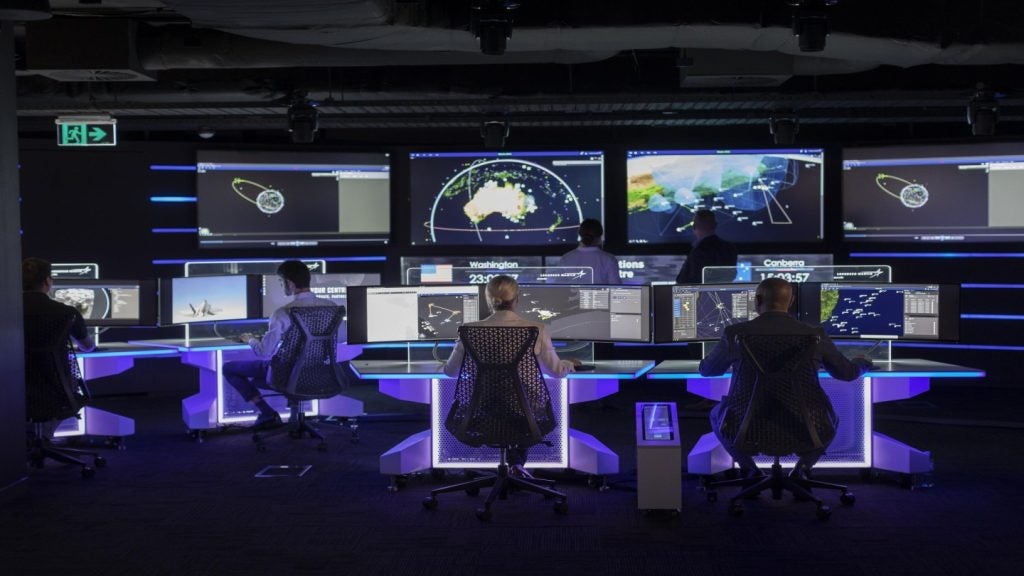
The European Secure Software Defined Radio (ESSOR) programme aims to provide the architecture of Software Defined Radio (SDR) for the militaries of the six participating European nations, but also for other coalition partners. Additionally, it plans to provide a military high-data waveform, which allows for the production of software radios featuring common security, interoperability and reconfigurability among European armed forces. ESSOR programme manager Philippe Margot tells Mark Brierley how the project is progressing.
What are the main objectives of the ESSOR programme?
The ESSOR programme was launched around four years ago and involves six participating nations. The main goal is to provide a basis for the development and production of software defined radio products in Europe within the timeframe of 2011-15. On the one hand, there is a focus on architecture. On the other, it’s a European initiative to improve the know-how of the industries involved.
We consider security and interoperabilty to be the major topics of this programme. The expectation is that we improve interoperability between our European partners, and also between the US and NATO, by designing architecture and technologies that can be used by all parties. It also involves the procurement of common information security architecture and the formation of a new coalition waveform to be used in the future. This last point is important; we want the waveform to be used widely in coalition operations.
What work will you be undertaking with the US and NATO?
We have a relationship with NATO. It is developing its own requirement for SDR that pertains to the NATO countries. They have been writing down the requirements of a narrowband waveform and have made a formal proposal to the industry, but when it comes to the wideband waveform – that is the ESSOR programme.
NATO knows that there are two main initiatives today; the ESSOR programme and the coalition wideband networking waveform (COALWNW), which is another project that addresses the same need. So there are two initiatives that could benefit NATO, but we don’t know yet who will end up deciding the organisation’s specification and standard. We are currently liaising with NATO, and it
is using us to decide its wideband waveform specification.
See Also:
Is it a hindrance or a help having these two programmes running concurrently?
There is some overlap, not only in terms of programme goals, but also in relation to the nations involved. We have six nations participating in ESSOR; Finland, France, Italy, Poland, Spain and Sweden.
How well do you really know your competitors?
Access the most comprehensive Company Profiles on the market, powered by GlobalData. Save hours of research. Gain competitive edge.

Thank you!
Your download email will arrive shortly
Not ready to buy yet? Download a free sample
We are confident about the unique quality of our Company Profiles. However, we want you to make the most beneficial decision for your business, so we offer a free sample that you can download by submitting the below form
By GlobalDataThe COALWNW programme is much wider and involves 11 participating member nations, five of which are currently taking part in ESSOR. But the goal is the same; the definition, development and procurement of a coalition waveform.
So there is some overlap, but what does it mean? In the case of COALWNW, it means we don’t know yet which waveform will be selected. Whichever is chosen, it might be eligible to become the waveform for the US or wherever.
What sort of input does each of the six participating nations bring to ESSOR?
The spirit of the programme is that every nation involved could bring its own national industry. Because of the procurement involved, each nation needed to involve its indigenous communications industry, a so-called national champion in their country that they proposed to form a partnership with the industry leaders from the other countries.
For example, France has involved Thales and Italy has chosen Selex. All six of the nations arrived in the programme complete with industrial national champions.
So how does ESSOR centrally marshal the efforts of each nation and its national champion for the common good?
We are working on behalf of the nations, so we receive a mandate from the participants to execute the programme on their behalf. We also received some high-level objectives from those nations, plus the planned cost, time and performance. So we liaise directly with the prime contractors, in this case the six national champions.
The trickiest element, considering the number of stakeholders, is that all the decisions between the nations have to be taken unanimously, so that can cause difficulties. To begin with, there was a steep learning curve that we all had to get used to. It took some time, for sure, because the national champions are also competitors, so we needed to create some kind of industry spirit within this programme in order to make it work. That was one of the first tasks that we carried out.
Where is the ESSOR programme currently up to and are you on schedule?
The programme is composed of two strands; the ESSOR architecture and the waveform. So we have two sets of different activities. As far as the architecture is concerned, it has been designed and approved by the six participating companies as a common product. It was then implemented, validated and accepted on the six radio platforms, one for each country. So as far as this part is concerned we are done.
The second strand is the specification of the waveform. This has now been finalised and we are conducting high-fidelity simulations that can ensure the necessary performance is met.
Now we are part of the process, which is the development of the so-called ‘best waveform’, and the national champions must propose the code of the waveform. It is currently being developed and will be made available in 2013, following some tests and demonstrations.
The plan is to have the best waveform developed and complete implementation on the national platform in one year’s time. We will then finish the programme by running multi-lab tests between all these platforms to ensure that the interoperability criteria are met. The contract concludes at the end of 2014.
How much consideration has been given to future-proofing the ESSOR technology in order to incorporate new developments?
We have already thought about the future and it really depends on the operational requirements of the nations involved. Today, we can’t be too sure about what technical improvements to the waveform could benefit future operations.
But we are already thinking about phase two, which is mainly composed of technical tests where the waveform can be proven in the field, rather than in lab tests. Also, we are looking for some improvement in the architecture, because this evolves according to what the US is doing in the field.
We do not intend to close the programme after five years. The waveform is something we will live with for 30 years, so there will definitely be improvements over that time. However, it will depend on several things; for example, the operational needs, and how much we can afford. All these things are being discussed at the moment.
ESSOR national champions
Each of the six ESSOR nations has put forward an indigenous telecommunications industry leader to develop the SDR architecture, known as the ‘national champion’:
Finland: Elektrobit
A global developer of advanced technology that specialises in embedded software and hardware solutions for the automotive industry and wireless technologies, Elektrobit (EB) has worked on several SDR-based communications solutions for defensive forces, leading technology vendors and system integrators.
Italy: SELEX
A global supplier of advanced communication, navigation and identification solutions for governmental, military and civil customers, SELEX Communications represents the convergence of all of Finmeccanica’s manufacturing activities in the telecommunications sector.
Poland: Radmor
The largest manufacturer of VHF/UHF radio communication equipment in Poland, Radmor has over 55 years of industry experience, and produces handheld, mobile and stationary radio-telephones, radio modems and data transmission modules, as well as a range of military radio communication systems.
France: Thales
Thales developed the PR4G communication system for the French Army, and now exports 150,000 radios to 40 countries. The company is recognised as a global technology leader for the defence and security, and aerospace and transportation industries.
Spain: Indra
The firm behind terminal radio software (TERSO), which Spain has designated as the ESSOR national SDR platform, Indra is the country’s largest technology multinational. In addition to defence and security, the company is involved in energy, financial services, public administration, healthcare, telecoms and media, and transport and traffic.
Sweden: Saab AB
Replacing the Ericsson Group on the ESSOR programme when it acquired Ericsson Microwave Systems, Saab AB serves the global market with products and services aimed at both military defence and civil security. Its operations are divided into five categories: aeronautics, dynamics, electronic defence systems, security and defence solutions, and support and services.




